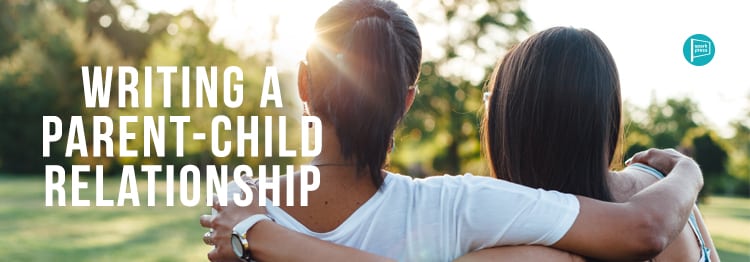
Have you noticed that the stories we consume as entertainment often focus on a young protagonist with one or both parents out of the picture? They may be dead, estranged, out of town, missing, or even physically present but negligent. Why is this? Is it to create motivation; this could inspire defiance, retribution, reconciliation, or honoring their memory? Is it to keep the child’s background mysterious, providing a cover for their call to action, when they discover something exceptional about themselves? Or is it simply because, frankly, parent-child relationships are hard to write?
While we’d like to hope it’s one of the first two, we can’t help but acknowledge the truth in the third. Writing the unique bond between parent and child is hard, and has to be done well to seem at all realistic. Here are some of our top tips to writing a parent-child relationship.
Develop their history
An essential part of creating a relationship between two characters is their shared history. As parent and child, they have a lot of shared history. How did the parent feel when the child was born? What moments do each of them look back upon fondly? When did they feel closest to each other? What were their biggest fights about? What is it about each other that they resent? What past issues have created tension between them?
Knowing all of this helps create the fabric of their relationship. It determines if it’s a positive one, a troubled one, or somewhere in the middle. It defines the push and pull of it—is one of them more invested in the relationship than the other?
Develop their personal philosophies
No two people agree or disagree on everything. It’s impossible to go through every single moral question and determine what each person thinks. Instead, come up with a couple principles that guide their morality, actions, and way they see the world. One of the most iconic ones is the parenting philosophy from Matilda. “I’m right, you’re wrong, I’m big, you’re small, and there’s nothing you can do about it.” A character with that philosophy would be confrontational, aggressive, bossy, and any relationship they have with a child would be based on fear.
On the other hand, the guiding principle “Let he who is without sin cast the first stone” would be that of someone who acknowledges that no one is perfect but doesn’t feel we should judge others for their misdeeds. This kind of parent would let their children have a long leash for self-expression, try to lead by example, and absolutely not believe in corporal punishment,
Develop their reactions
When the parent and child come into conflict, as they do when their morals clash, how do they react? This can be a reflection on who they are as a person. Do they explode? Clam up? Change the subject? Why? How does the other person react to their reaction? Explosions can be contagious—but they can also cause the other person to clam up or break down. Clamming up can frustrate the other person, or calm them because they’re not fighting back. Changing the subject can smooth things over or frustrate the other person—but even if it smoothed things over for now, the issue has not been dealt with and may cause future tension or resentment.
Figure out their roles in relation to the plot
Let’s be honest: the plots of many a YA novel just would not have happened had a parent been around, especially for books more on the fantasy/sci-fi/dystopia end. A good parent wouldn’t let the protagonist do something so dangerous or reckless—they’d say no, ground them, or insist on doing it themselves. So how can a parent have a role without taking over?
Background help
Let the parents in on the surface of the problem. They can act as a guide and give advice, perhaps even acting as a mentor to develop a skill. They don’t have to know what the child is going to do with it. Think of the trope of the magical mentor, like Gaius in Merlin. There is absolutely no reason why a magical mentor can’t actually be a parent. In fact, Gaius acts like a parent most of the time, so when he is privy to the more dangerous aspects of what Merlin is going to do, he tries to stop him, but Merlin doesn’t listen.
Let them
Let them take over—or at least think they are. The parent and child decide to work together to solve the problem, with the parent insisting on taking the dangerous part. However, in a surprise plot twist, the dangerous part is not all that dangerous and the not dangerous part puts the child’s life in peril. In The Santa Clarita Diet, Sheila and Joel divvy up their tasks—Sheila is going to murder a child trafficker, and Joel is going to retrieve a pen with their contact information on it that they left at the apartment of the last person they tried to kill. While this may not be a parent and child example, it illustrates this plot twist eloquently. Sheila seems to be taking on the more dangerous role—but the man she believed to be a child trafficker turns out to be the oncologist her neighbor is having an affair with, and some gang members turn up at the apartment and beat up Joel and steal his money and clothes. His part becomes way more dangerous.
Any more tips for writing parent-child relationships? Share them below!

Nice content focusing on the parent-child relationship. Great Job Done. Highly recommended!
The parent-child relationship is such a relationship to create emotional and social development in the child. Spending time with their children affects the strength of the social, physical, mental, and emotional health. This will benefit to build a strong relationship.
The importance emphasized here is so practical and informative. Will definitely help to build a strong and positive bonds between parents and their kids.
Thankyou!